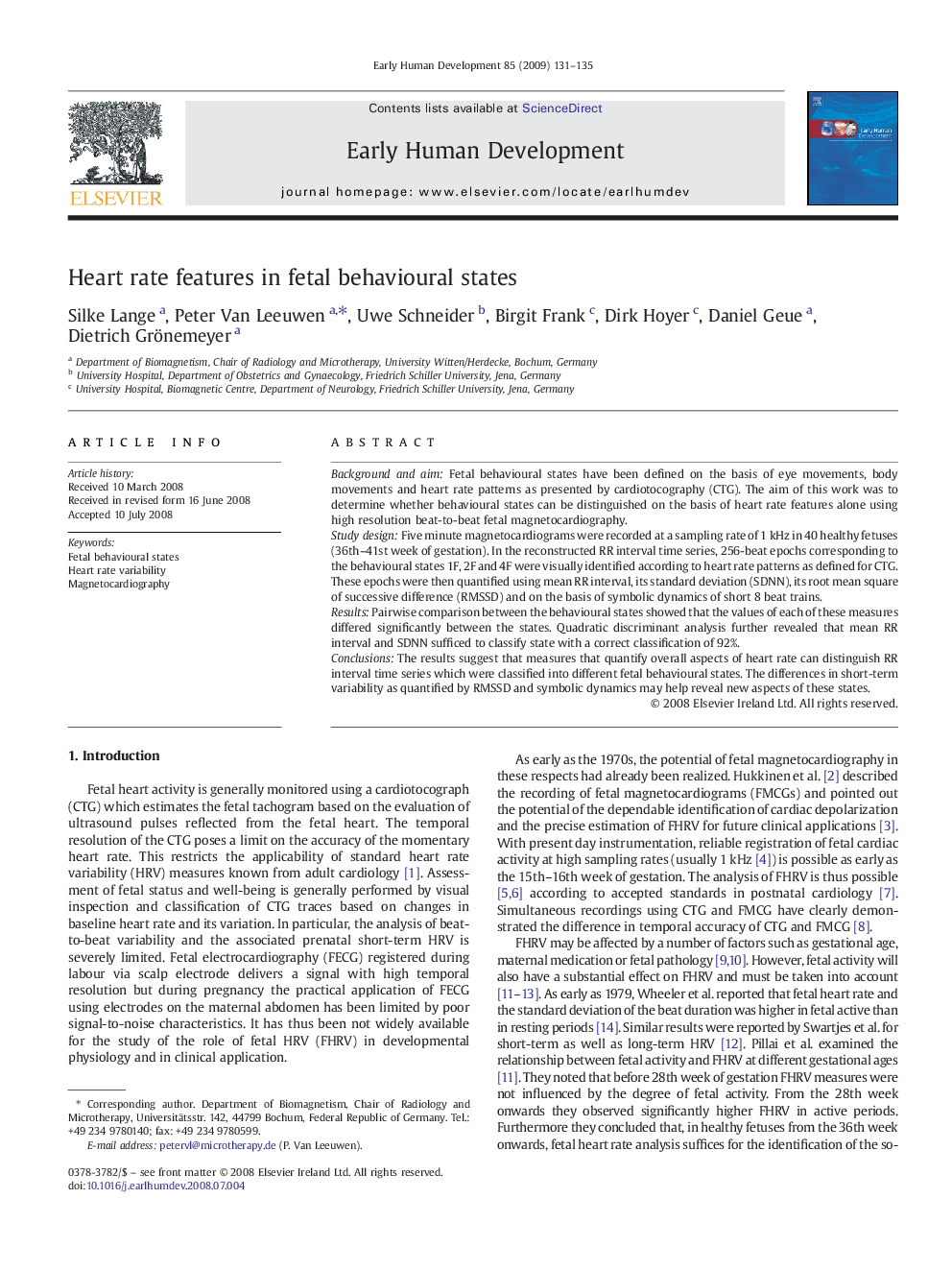| Article ID | Journal | Published Year | Pages | File Type |
|---|---|---|---|---|
| 3917589 | Early Human Development | 2009 | 5 Pages |
Background and aimFetal behavioural states have been defined on the basis of eye movements, body movements and heart rate patterns as presented by cardiotocography (CTG). The aim of this work was to determine whether behavioural states can be distinguished on the basis of heart rate features alone using high resolution beat-to-beat fetal magnetocardiography.Study designFive minute magnetocardiograms were recorded at a sampling rate of 1 kHz in 40 healthy fetuses (36th–41st week of gestation). In the reconstructed RR interval time series, 256-beat epochs corresponding to the behavioural states 1F, 2F and 4F were visually identified according to heart rate patterns as defined for CTG. These epochs were then quantified using mean RR interval, its standard deviation (SDNN), its root mean square of successive difference (RMSSD) and on the basis of symbolic dynamics of short 8 beat trains.ResultsPairwise comparison between the behavioural states showed that the values of each of these measures differed significantly between the states. Quadratic discriminant analysis further revealed that mean RR interval and SDNN sufficed to classify state with a correct classification of 92%.ConclusionsThe results suggest that measures that quantify overall aspects of heart rate can distinguish RR interval time series which were classified into different fetal behavioural states. The differences in short-term variability as quantified by RMSSD and symbolic dynamics may help reveal new aspects of these states.
